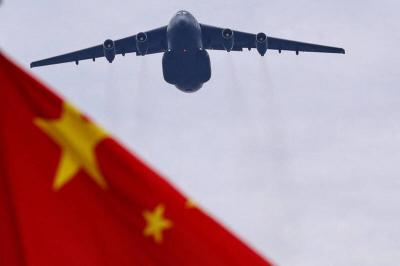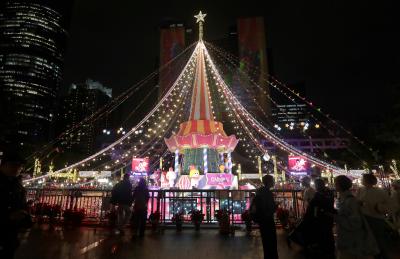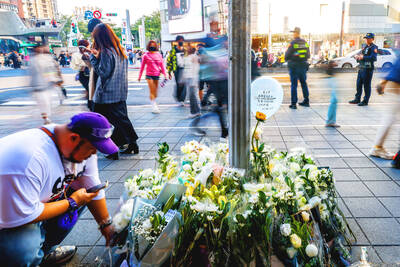The US State Department’s latest annual guideline on contacts between US and Taiwanese officials offered nothing new, the Ministry of Foreign Affairs said yesterday, refuting criticisms that the guideline was more restrictive than ever.
“The same guideline is circulated around the same time each year to all the foreign embassies and US government posts. It was nothing new,” ministry spokesman Henry Chen (陳銘政) said, adding that Taiwan has suggested Washington stop repeating the same gesture each year to avoid misunderstandings.
“Some people, when they hear there is a new guideline, they might misinterpret that the US has adopted new policies on Taiwan, which is not the case,” he said.
The guidelines are a set of prohibitions issued to all US officials to limit bilateral interactions with their Taiwanese counterparts because Washington has only maintains unofficial relations with Taiwan since 1979. The guideline bars any US official from writing personal thank-you notes to a Taiwanese official unless written on plain paper and using plain envelops to disguise the sender’s official identity.
Some critics have said that the wording in the 2008 guideline released last week imposed stricter restrictions on visits between Taiwan and US officials.
The new guideline specifically bars the display of the Republic of China flag on US premises, a condition not listed in the 2001 guideline, critics said.
Lawrence Walker, a press officer at the American Institute in Taiwan, in a telephone interview with the Taipei Times, said that the latest guidance offers no new insights to the US’ long-standing position on Taiwan and that Washington will continue to maintain an unofficial relationship with Taipei under the Taiwan Relations Act (TRA) framework.
“The US has not changed its policy towards Taiwan. The TRA offers the overall legal framework for the US’ unofficial relations with Taiwan and under this framework, the State Department [for many years] releases an annual guideline on how to conduct those unofficial relations,” he said.
Walker said some minor modifications could be added or subtracted to the guidelines, but the overall context remains the same year after year.

Beijing could eventually see a full amphibious invasion of Taiwan as the only "prudent" way to bring about unification, the US Department of Defense said in a newly released annual report to Congress. The Pentagon's "Annual Report to Congress: Military and Security Developments Involving the People's Republic of China 2025," was in many ways similar to last year’s report but reorganized the analysis of the options China has to take over Taiwan. Generally, according to the report, Chinese leaders view the People's Liberation Army's (PLA) capabilities for a Taiwan campaign as improving, but they remain uncertain about its readiness to successfully seize

Taiwan is getting a day off on Christmas for the first time in 25 years. The change comes after opposition parties passed a law earlier this year to add or restore five public holidays, including Constitution Day, which falls on today, Dec. 25. The day marks the 1947 adoption of the constitution of the Republic of China, as the government in Taipei is formally known. Back then the Chinese Nationalist Party (KMT) governed China from Nanjing. When the KMT, now an opposition party in Taiwan, passed the legislation on holidays, it said that they would help “commemorate the history of national development.” That

Taiwan has overtaken South Korea this year in per capita income for the first time in 23 years, IMF data showed. Per capita income is a nation’s GDP divided by the total population, used to compare average wealth levels across countries. Taiwan also beat Japan this year on per capita income, after surpassing it for the first time last year, US magazine Newsweek reported yesterday. Across Asia, Taiwan ranked fourth for per capita income at US$37,827 this year due to sustained economic growth, the report said. In the top three spots were Singapore, Macau and Hong Kong, it said. South

HORROR STORIES: One victim recounted not realizing they had been stabbed and seeing people bleeding, while another recalled breaking down in tears after fleeing A man on Friday died after he tried to fight the knife-wielding suspect who went on a stabbing spree near two of Taipei’s busiest metro stations, Taipei Mayor Chiang Wan-an (蔣萬安) said. The 57-year-old man, identified by his family name, Yu (余), encountered the suspect at Exit M7 of Taipei Main Station and immediately tried to stop him, but was fatally wounded and later died, Chiang said, calling the incident “heartbreaking.” Yu’s family would receive at least NT$5 million (US$158,584) in compensation through the Taipei Rapid Transit Corp’s (TRTC) insurance coverage, he said after convening an emergency security response meeting yesterday morning. National